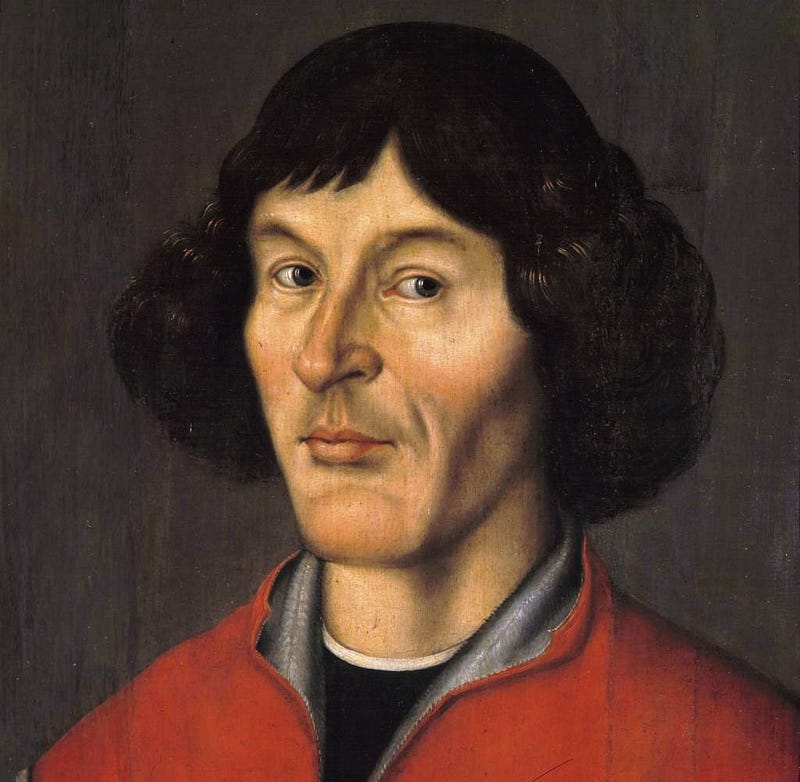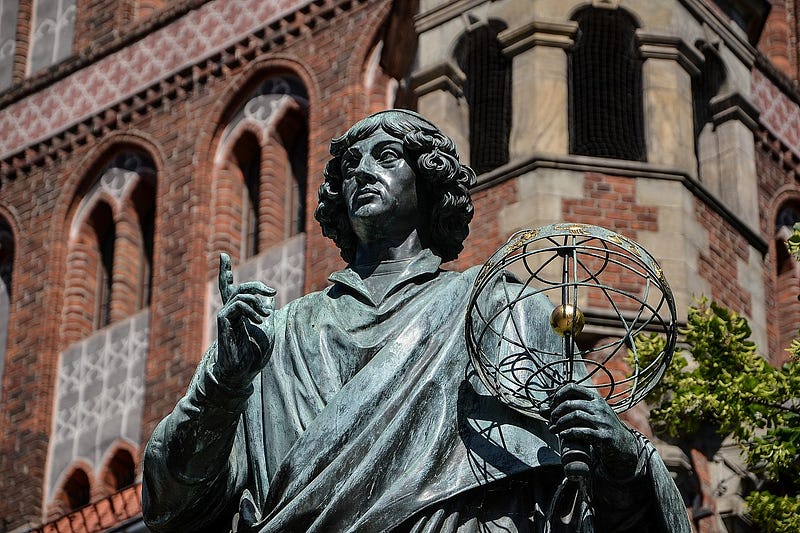The Untold Life and Discoveries of Nicolaus Copernicus
Written on
Chapter 1: The Revolutionary Thinker
Nicolaus Copernicus is renowned as one of history's most influential scientists. His groundbreaking heliocentric theory established that the Sun, rather than the Earth, is at the center of the solar system, with planets, including our own, orbiting around it. While his scientific achievements are monumental, many historians delve into the complexities of his personal life, revealing a man with hidden depths and secrets.

In 2023, we celebrate the 550th anniversary of Copernicus's birth in Torun, Poland, marking it as the Year of Copernicus. He was the first significant thinker since antiquity to argue for a sun-centered cosmos, a notion that faced considerable criticism during his time.
Who Was Nicolaus Copernicus?
Born on February 19, 1473, Copernicus was the youngest child of merchant parents Nicolaus and Barbara (née Watzenrode). He had an older brother, Andrew, and two sisters, Barbara and Catherine. Following his father's death when he was ten, his mother remarried to her brother, Luke Watzenrode.
Copernicus began his education in Torun, attending the parish school at the Church of St. John. In 1491, he and Andrew enrolled at the Cracow Academy, during a period when the Cracow school of astronomy and mathematics flourished. This environment allowed him to learn from some of the most esteemed scholars of the time.

Becoming a Clergyman
Most scholars agree that during his time at the Cracow Academy, Copernicus received a lower ordination. This position, conferred by a bishop, allowed him to undertake certain religious duties. Evidence suggests he became a canon of Warmia by August 26, 1495.
For many years, there were speculations regarding whether he achieved higher ordination and became a priest. However, recent research has clarified that earlier interpretations of 15th-century documents were incorrect.
After completing his studies, he began law studies at the University of Bologna in 1496. Although legal studies did not captivate him, he encountered many inspiring figures, including astronomer Dominic Maria Novara and geographer Mark of Benevento, who significantly influenced his intellectual journey.
In 1501, he pursued further education at the University of Padua, studying medicine and Greek philology while continuing his legal education. Historians believe he earned both a doctorate in law and a bachelor's degree in medicine, enabling him to practice.

A Shift Toward Science
Copernicus returned to Poland in 1503 after years of study. During this time, he was often urged to accept priesthood, with his uncle even suggesting he assume the bishopric of Warmia. However, he chose to dedicate himself to science. In 1510, he relocated to Frombork, where he spent three years.
By 1516, he became the administrator of the Olsztyn chapter’s properties, a role he maintained until 1519. During the Polish-Teutonic war of 1519–1521, he acted as a negotiator. Once the political climate stabilized, Copernicus was finally able to focus on his scientific endeavors.
Despite a lack of widespread interest in his work at the time, he continued to develop his theories and authored "On the Revolutions of the Celestial Spheres." This seminal work, published in 1543, proposed a heliocentric model, fundamentally challenging the prevailing geocentric view. Beyond astronomy, Copernicus was a polymath, engaging in law, economics, medicine, cartography, and literature.

Secrets of His Private Life
Amidst the discussions of Copernicus's legacy, his personal life presents intriguing narratives, particularly a rumored romance with Anna Schilling. Some historians suggest that he lived in a relationship with her, which, while morally ambiguous, adds a romantic dimension to his persona, making him more relatable as a figure beyond the celestial.
If this story were crafted by a modern author like Dan Brown, it could easily transform into an engaging narrative. Despite the romantic undertones, the historical facts surrounding Copernicus and Anna remain elusive, providing fertile ground for speculation.
The affair between Copernicus and Anna is documented, yet much about her remains unknown. Researchers like Jack Repcheck assert that she was born in 1518, the daughter of a Dutch trader, although genealogical records can be inconsistent.

Who Was Anna Schilling?
Jack Repcheck is a prominent advocate for the theory of a romantic liaison between Copernicus and Anna. In his work "The Secret of Copernicus," he notes that between July 1531 and the summer of 1538, she spent time at Copernicus's residence in Frombork.
In the 16th century, clergy often ignored celibacy rules, and many clergymen cohabited with women or even had families. While such arrangements were not common, Copernicus was among a few canons in Frombork known to have mistresses.
Repcheck argues that Anna was a profound passion for Copernicus, who perhaps met her while she was managing his household. At the time of their first encounter, she was just 13 years old, and he was 58. Over the years, they developed a deep affection, although complications arose from their familial connections.
Anna was not merely a domestic figure; she was a well-educated and independent woman with a keen interest in astronomy, possibly leaving her marriage to pursue her connection with Copernicus.